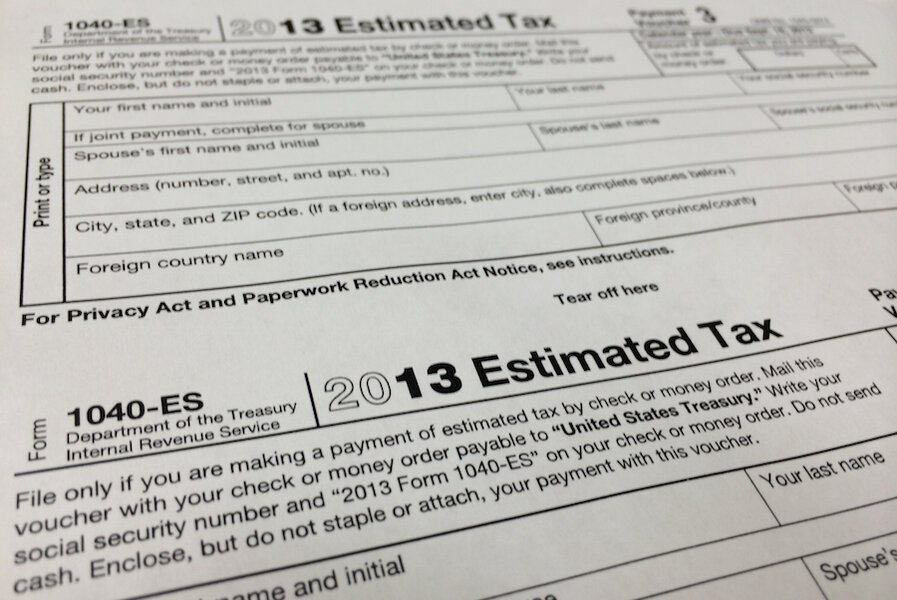Earned Income Tax Credit: how to know if you qualify
Loading...
The Earned Income Tax Credit can go beyond reducing the amount of tax you owe. It may net you a refund — in some cases, a refund that exceeds how much you actually paid in taxes.
The credit is intended to reduce or eliminate the tax paid by low- and moderate-income wage earners. Last year, 27 million taxpayers claimed more than $65 billion in EITC, averaging $2,400 per return.
If you fall within the guidelines for the credit, be sure to claim it on your 2015 return. And if you didn’t claim the credit when you filed your 2012, 2013 or 2014 taxes, but you think you qualified for it, the IRS encourages you to let it know so you can get that money back.
What are the income thresholds for the EITC?
Claiming the EITC requires that both your earned income and your adjusted gross income be under certain levels that are based on your filing status and the number of qualified children you’re claiming (from none to three or more).
Your earned income usually includes job wages, salary, tips and other taxable pay you get from your employer. Your adjusted gross income is your earned income minus certain deductions.
In general, the less you earn, the larger the credit you may be able to claim.
Below you’ll find a table of the maximum credits available, plus the maximum amount you can earn before losing the benefit altogether.
| Number of children | Maximum credit |
Max earnings single filers |
Max earnings married filers |
|---|---|---|---|
| 0 | $503 | $14,820 | $20,330 |
| 1 | $3,359 | $39,131 | $44,651 |
| 2 | $5,548 | $44,454 | $49,974 |
| 3 or more | $6,242 | $47,747 | $53,267 |
What other rules apply?
There are additional income qualifications: You must have at least $1 of earned income. And your 2015 investment income must be $3,400 or less.
You can’t claim EITC if you’re married filing separately.
You must not file Form 2555, Foreign Earned Income; or Form 2555-EZ, Foreign Earned Income Exclusion.
Who qualifies to take the EITC?
Typically families with children qualify for the largest credits, although you don’t have to have a child in order to claim the EITC.
If you do claim one or more children as part of your earned income credit, each must pass certain tests to qualify:
- The child can be your son, daughter, adopted child, stepchild, foster child or grandchild. The child also can be your brother, sister, half-brother or half-sister, stepbrother or stepsister or any of their children (your niece or nephew).
- The child must be younger than you, or younger than your spouse if you’re filing jointly.
- The child must be younger than 19 at the end of the year or under 24 if a full-time student; there is no age limit for children who are classified as “permanently and totally disabled.”
- The child must have lived with you in the United States or District of Columbia for more than half the year.
The IRS says that failure to pass the relationship and residency tests are the most common reasons a child doesn’t meet the qualified child requirement.
You’ll also need:
- A Social Security number for each child you’re claiming (make sure the qualifying child’s name and Social Security number are filled in on the return exactly as they appear on the Social Security card)
- Birthdate of each qualifying child
- Dependent child care information, including the name and address of paid caretakers and either their Social Security number or other tax identification number
You may be able to file for the earned income tax credit if you don’t have a qualifying child but meet the income requirements for your filing status. To qualify, you must meet these three rules:
- You must have resided in the United States for more than half the year.
- You can’t be claimed as a dependent or qualifying child on anyone else’s return.
- You must be at least 25 years old but under age 65 at the end of 2015.
Over time, Congress has expanded access to the earned income credit for members of the military, clergy, recipients of disability benefits and those who’ve been affected by disasters. Taxpayers who have disabilities or who have children with disabilities often qualify for it as well.
Consequences of making an EITC-related error
Not only does an error on your tax form delay the EITC part of your refund — sometimes for several months — but it also means the IRS could decide to deny the entire amount of the earned income tax credit.
If the IRS denies your whole EITC claim:
- You must pay back any EITC amount you’ve been paid in error, plus interest.
- You might need to file Form 8862, Information to Claim Earned Income Credit After Disallowance, before you can claim the EITC again.
- You could be banned from claiming EITC for the next two years if the IRS finds you filed your return with “reckless or intentional disregard of the rules.”
- You could be banned from claiming EITC for the next 10 years if the IRS finds you filed your return fraudulently.
Most online tax preparers walk you through the EITC with a series of interview questions, greatly simplifying the process. But remember: Even if someone else prepares your return for you, the IRS holds you responsible for all information on any return you submit.
This article first appeared in NerdWallet.





